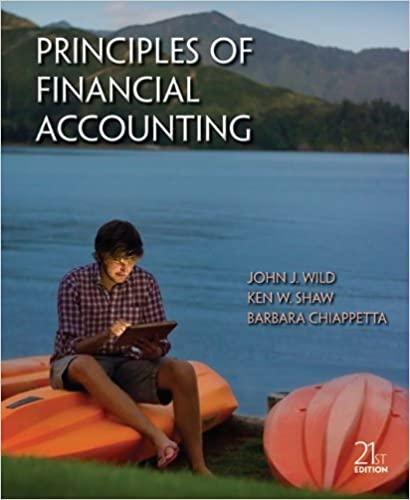Answered step by step
Verified Expert Solution
Question
1 Approved Answer
THIRD PART Colton Enterprises experienced the following events for Year 1, the first year of operation: Acquired $55,000 cash from the issue of common stock.
THIRD PART
Colton Enterprises experienced the following events for Year 1, the first year of operation:
- Acquired $55,000 cash from the issue of common stock.
- Paid $14,000 cash in advance for rent. The payment was for the period April 1, Year 1, to March 31, Year 2.
- Performed services for customers on account for $112,000.
- Incurred operating expenses on account of $45,000.
- Collected $85,500 cash from accounts receivable.
- Paid $41,000 cash for salary expense.
- Paid $36,000 cash as a partial payment on accounts payable.
Adjusting Entries
- Made the adjusting entry for the expired rent. (See Event 2.)
- Recorded $6,400 of accrued salaries at the end of Year 1.
Events for Year 2
- Paid $6,400 cash for the salaries accrued at the end of the prior accounting period.
- Performed services for cash of $61,000.
- Purchased $4,800 of supplies on account.
- Paid $16,500 cash in advance for rent. The payment was for one year beginning April 1, Year 2.
- Performed services for customers on account for $128,000.
- Incurred operating expenses on account of $61,500.
- Collected $109,000 cash from accounts receivable.
- Paid $59,000 cash as a partial payment on accounts payable.
- Paid $33,500 cash for salary expense.
- Paid a $11,000 cash dividend to stockholders.
Adjusting Entries
- Made the adjusting entry for the expired rent. (Hint: Part of the rent was paid in Year 1.)
- Recorded supplies expense. A physical count showed that $450 of supplies were still on hand.



Step by Step Solution
There are 3 Steps involved in it
Step: 1

Get Instant Access to Expert-Tailored Solutions
See step-by-step solutions with expert insights and AI powered tools for academic success
Step: 2

Step: 3

Ace Your Homework with AI
Get the answers you need in no time with our AI-driven, step-by-step assistance
Get Started


